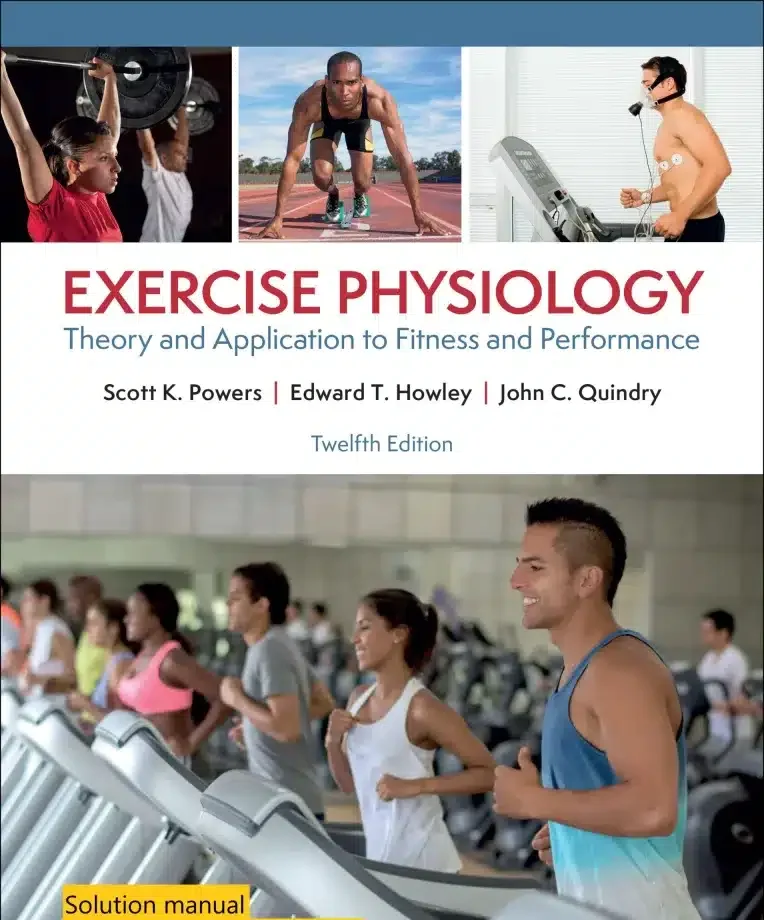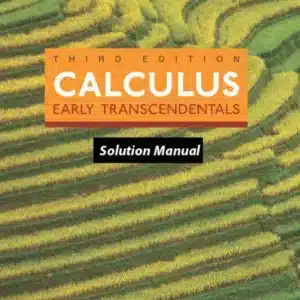Original price was: $39.99.$24.99Current price is: $24.99.
Solution manual for Exercise Physiology Theory and Application to Fitness and Performance, 12th Edition By Scott Powers © 2024
![]()
Product ID: 0909200
For Contact: bookzon.shop@gmail.com
Description
Solution Manual for Exercise Physiology: Theory and Application to Fitness and Performance, 12th Edition
By Scott Powers, ©2024

Book Overview
The 12th Edition of Exercise Physiology: Theory and Application to Fitness and Performance (©2024), authored by Scott Powers, serves as an essential resource for students pursuing a deep understanding of exercise physiology, clinical exercise physiology, human performance, kinesiology, physical therapy, and physical education. This comprehensive guide provides the latest research, clinical applications, and detailed explanations of exercise physiology concepts. It is designed to cater to both learners and instructors, offering the flexibility to tailor course content based on the specific needs of students.
In this updated edition, Dr. John Quindry joins the author team, adding expertise in the areas of exercise as medicine, chronic disease prevention, and therapeutic exercise. With the addition of three new chapters, the text now delves deeper into how exercise can be used for both the prevention and treatment of diseases, making this edition a valuable tool for understanding exercise’s broader applications to health.
Table of Contents
Section 1: Physiology of Exercise
-
Chapter 0: Introduction to Physiology of Exercise
An essential introduction to the key concepts and principles that underpin exercise physiology. -
Chapter 1: Common Measurements in Exercise Physiology
This chapter details the various measurement techniques used in exercise physiology to track physiological responses during physical activity. -
Chapter 2: Control of the Internal Environment
Discusses how the body maintains homeostasis during exercise and the physiological mechanisms responsible for regulating internal conditions. -
Chapter 3: Bioenergetics
Focuses on the energy systems of the body, including the ATP production process and how energy is utilized during exercise. -
Chapter 4: Exercise Metabolism
Explains the metabolic processes that occur during physical activity, emphasizing the breakdown of nutrients for energy. -
Chapter 5: Cell Signaling and the Hormonal Responses to Exercise
Describes how cell signaling and hormonal regulation play a key role in exercise adaptations. -
Chapter 6: Exercise and the Immune System
Investigates the effects of exercise on the immune system, highlighting how physical activity influences immune function. -
Chapter 7: The Nervous System: Structure and Control of Movement
Provides an in-depth look at the nervous system’s role in controlling voluntary and involuntary movement during exercise. -
Chapter 8: Skeletal Muscle: Structure and Function
Covers the structure and function of skeletal muscles, including muscle fiber types and how they adapt to training. -
Chapter 9: Circulatory Responses to Exercise
Focuses on the cardiovascular system’s responses during exercise, including heart rate, blood pressure, and vascular changes. -
Chapter 10: Respiration during Exercise
Explores how the respiratory system adjusts to the increased demands of exercise, ensuring adequate oxygen delivery. -
Chapter 11: Acid-Base Balance during Exercise
Examines how the body maintains acid-base homeostasis during exercise to prevent performance decrements and muscle fatigue. -
Chapter 12: Temperature Regulation
Explains how the body regulates its temperature during exercise, including sweating and vasodilation. -
Chapter 13: The Physiology of Training: Effects of Aerobic and Anaerobic Training
Analyzes how the body adapts to different types of training, both aerobic and anaerobic, and their physiological benefits. -
Chapter 14: The Physiology of Resistance Training
Details the physiological adaptations that occur with resistance training, focusing on muscle strength, endurance, and hypertrophy.
Section 2: Physiology of Health and Fitness
-
Chapter 15: Exercise is Medicine—Part 1: Prevention of Chronic Diseases
Explores the role of exercise in preventing chronic diseases such as heart disease, type 2 diabetes, and obesity. -
Chapter 16: Exercise is Medicine—Part 2: Therapy for Chronic Diseases and Prevention of Age-Related Physiological Dysfunction
Focuses on how exercise can be a therapeutic tool for managing chronic conditions and preventing age-related decline in health. -
Chapter 17: Exercise is Medicine—Part 3: Exercise Prescriptions for Health and Fitness
Offers practical guidelines for creating exercise prescriptions aimed at improving health, fitness, and well-being. -
Chapter 18: Nutrition, Body Composition, and Weight Management
Discusses the relationship between nutrition, body composition, and weight management, offering strategies to optimize health and performance.
Section 3: Physiology of Performance
-
Chapter 19: Factors Affecting Performance
Examines the physiological and environmental factors that influence athletic performance, including genetics, nutrition, and training. -
Chapter 20: Training for Performance
Details the key principles of training for performance optimization in sports, including periodization and specificity. -
Chapter 21: Training for the Female Athlete, Children, Special Populations, and the Masters Athlete
Highlights how exercise programs should be tailored to meet the unique needs of female athletes, children, and older adults. -
Chapter 22: Nutrition, Body Composition, and Performance
Focuses on how nutrition and body composition are critical factors in maximizing athletic performance. -
Chapter 23: Exercise and the Environment
Discusses how environmental factors such as heat, altitude, and humidity can impact exercise performance and safety. -
Chapter 24: Ergogenic Aids
Reviews the use of ergogenic aids (performance-enhancing substances) in sports and their effectiveness.
Appendices
-
Appendix A: Calculation of Oxygen Uptake and Carbon Dioxide Production
Offers detailed methods for calculating oxygen consumption (VO2) and carbon dioxide production (VCO2) during physical activity. -
Appendix B: Dietary Reference Intakes: Estimated Energy Requirements
Lists the estimated energy requirements for various age groups, genders, and activity levels to support health and performance. -
Appendix C: Dietary Reference Intakes: Vitamins
Provides an overview of the recommended daily intake for essential vitamins and their roles in health and performance. -
Appendix D: Dietary Reference Intakes: Minerals and Elements
Details the recommended intake for minerals and trace elements vital for maintaining physiological function. -
Appendix E: Percent Fat Estimate for Men: Sum of Triceps, Chest, and Subscapula Skinfolds
Offers formulas for estimating body fat percentage in men based on skinfold measurements. -
Appendix F: Percent Fat Estimate for Women: Sum of Triceps, Abdomen, and Suprailium Skinfolds
Provides body fat estimation formulas for women using skinfold measurements at different body sites. -
Appendix G: MET Equivalents for Exercise, Activities of Daily Living, and Household Chores
Lists Metabolic Equivalent of Task (MET) values for common activities, helping to estimate energy expenditure.
For more manual solutions, click here.






Professional preparation
Great for revision
Excellent support
Quick response
Example-backed